The Elby e-bike will blow you away for 90 miles
When it comes to ground transportation, you pretty much know the options: Walk, bike or drive. Each offers a different balance of speed, exercise, cost, comfort and pollution.

You could argue, though, that there’s room for another mode, one that fills in an important empty spot on that spectrum: the electric bike.
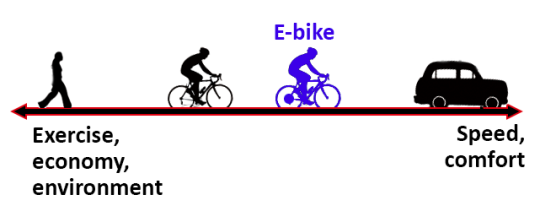
The electric motor on an e-bike basically amplifies the power of each pedal stroke, making easy work of hills and headwinds, getting you going faster, and giving you the chance to rest occasionally.
Legally, an e-bike is a bicycle. So unlike a motorcycle, you don’t need a license, don’t have to be 16, don’t have to register it, don’t have to fuss with a bunch of laws. (Also unlike a motorcycle, you’re supposed to pedal most of the time.)
The good e-bikes seem surprisingly expensive — in the $3,500 range — until you consider how often you can commute or do errands on these things. Plenty of people can get away with an e-bike instead of a car (or instead of two $2.75 bus rides every day). And, of course, you never have to pay for gas. You sail past traffic jams, and you never have to hunt for (or pay for) parking.
OK. Now that you’ve had a crash course in the Fourth Great Mode of Land Transport, it’s time to introduce you to the Elby. It’s a $3,700 e-bike, shipping in September, that’s billed as “the world’s first one-size-fits-most pedal assist hybrid bicycle that’s attractive, intuitive, versatile and confidence inspiring.”
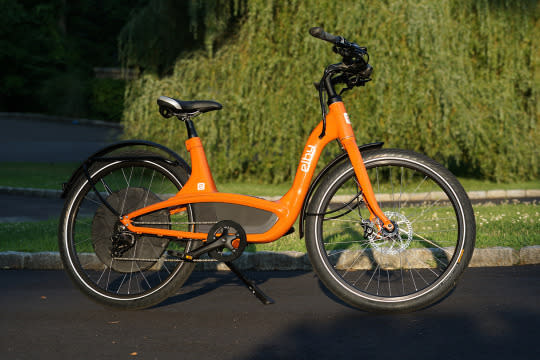
The world’s first what?
When pressed, Elby’s spokesperson refined that statement enough for me to assess.
First, integration. Many e-bikes are just regular bikes with motors and batteries bolted on. The Elby bike, though, was designed all at once, around a weather-sealed propulsion system (battery, motor, controls, screen) from a company called BionX (pronounced “bionics”). No other bike, according to Elby, was designed with the BionX system so smoothly integrated into the bike.
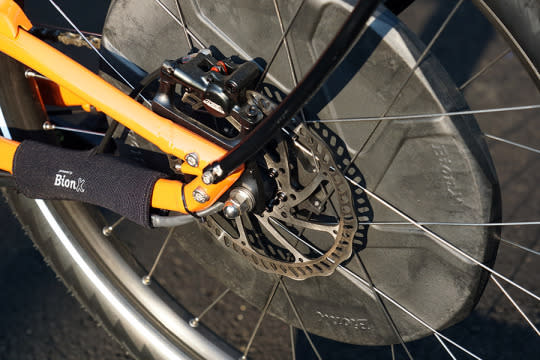
Second, the Elby’s power and range are better than other bikes in its price class, as you can see here:
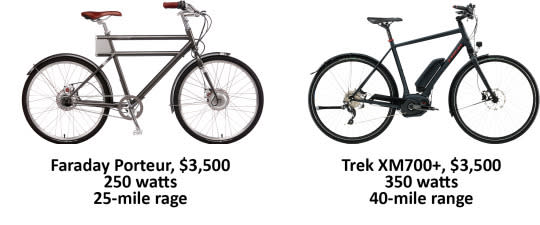
And the Elby? 500 watts, and a 90-mile range.
Keep in mind that e-bike range figures are notoriously waffly. Obviously, you’ll get more range the less you use the motor. So “90 miles” is the Elby’s maximum — when you pedal “over gentle terrain with a moderate level of assist,” the company says. Hills, wind and using the motor at top power continuously give you much shorter range.
Here’s what’s cool about the BionX motor, though: It’s got regenerative braking, just like a Prius or another hybrid car. That is, you can actually recharge the battery when you’re coasting, extending it by (Elby says) 15% or so.
Riding the Elby
OK, so the Elby has more power, greater range, and more unified design than its high-end rivals. Looks great on paper. How is it to ride?
The power kicks in as soon as you begin to pedal — smoothly, firmly, easily, silently — and you start whooshing forward with an unexpected speed and grace. You feel like you’ve got thigh muscles the size of redwood trees. It is fantastic.
I would give anything to have a montage of people’s exclamations as they ride this thing for the first time. Friends, family, neighbors, our Yahoo film crew — everybody gets a turn, and everybody goes, “Oh my GOD!” or “Oh MAN!” or “Holy ____!” Everybody.
The sensation reminds me of your dad’s hand on your back when you first learned to ride your bike: a controlled, steady, affectionate boost forward. I wish you could try it. You may suddenly be more inclined to forgive the $3,700 price tag.
Many e-bikes deliver power either when you pedal or when you press an accelerator button. The Elby does either. That is, when you’re tired of pedaling, you can press a thumb throttle on the right handlebar to deliver juice to the motor.

Also on that handlebar: + and – buttons. The + button cycles through four levels of push; use more when you want to go faster (or the hill is higher). The – button cycles through four levels of regenerative braking. Use more when you’re going down a steep hill, to slow down the bike and convert its momentum back into battery charge.
Those buttons are the least satisfying part of the Elby. What’s the relationship between these different motor gears and the bike’s actual gears? When should you use what?
Also: To cycle through all the way from the top-acceleration mode to the top-regeneration mode — for example, when you crest a big hill — you have to press the – button a total of eight times, which feels pretty clumsy.
(By the way: I asked where the name Elby comes from. Whose initials are “L.B.”? Nobody’s — it’s short for ELectric BYcycle. Doh!)
A loaded e-bike
For $3,700, you’d better get a really tricked-out vehicle — and you do. It’s rain-proof and built like a tank, warrantied for three years; the motor and battery need no maintenance at all. And it comes with:
Nine gears. You can ride the Elby perfectly well even when the battery’s totally dead; it’s just a bike. (A single-speed version is also available, for $200 less.)

Front and back LED lights. Really, really bright, clear lights up front; red taillights. A switch on the handlebar turns them on and off.
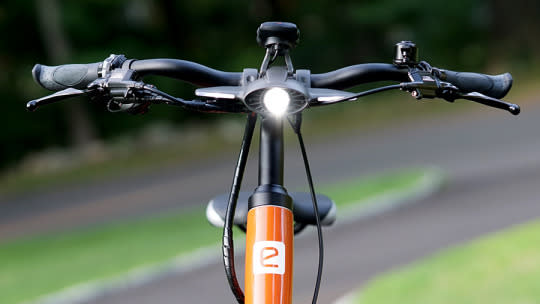
Hydraulic brakes. Tektro hydraulic disc brakes, to be precise.
Heavy-duty kickstand. Also rails for installing panniers (saddle bags).
Color screen. The bike computer is wireless and easy to twist on and off a post at the center of the handlebars. A button on the right handlebar controls what statistics it shows:
odometer, speed and so on.
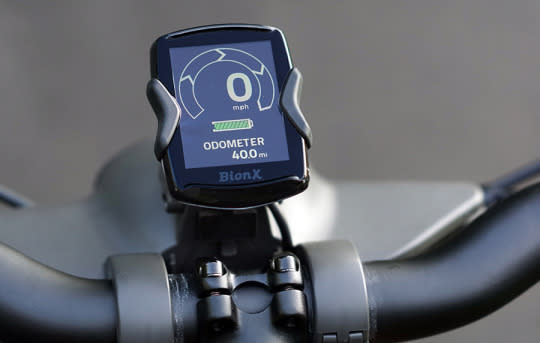
Smartphone options. What’s cool, though, is that you can replace that little screen with your smartphone, running an Elby app. (The bike comes with an adhesive mounting disk for the back of your phone.) The app can show you a lot more details about your rides, including navigation and a history of your rides. It communicates with the bike by Bluetooth.
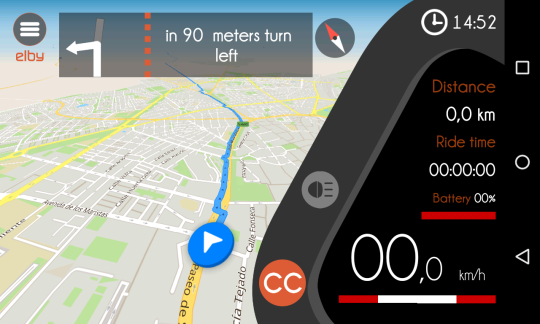
A USB charging jack. Yeah, that’s right: This bike can recharge your phone as you ride. Where do I sign!?

A dinger bell. The battery on this thing is worth special note. It’s an oddball shape, sculpted to fit neatly into a compartment beneath the main foot deck, which pops right off. (This 8-pound battery is down low on the frame, which keeps the center of gravity low for stability.)
You need a key to get the battery out; wouldn’t want thugs stealing your battery, now, would you?
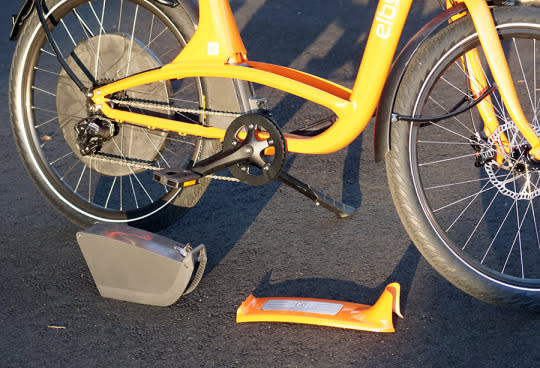
You can recharge the battery either in the bike (for example, in your garage at night) or out of it. For example, to recharge it while you’re at work, you unlock it, grab its handle, lift it out, and bring it up to your desk to plug in. The battery takes five hours for a full charge, and is expected to last 2 to 3 years if you ride every day, or 3 to 5 years if you don’t.
Reasons for pause
There’s no question that the Elby fulfills its mission, as defined by the two Austrian car-company veterans who came out of retirement to create it. It makes biking cities and suburbs more practical, more desirable, more pleasant. As many e-bike owners can attest, an e-bike means that you can commute to work and arrive not sweaty.
Even so, the joy isn’t entirely without its asterisks.
The big one is the weight. This bike weighs 50 pounds. You really don’t want to haul it up to your third-story walkup apartment every day.
The styling, as you’ve probably noticed, isn’t exactly Tour de France. It’s available in black, white, blue, gray or orange, but they all look like the bikes people ride to the market in Europe — more Schwinn than Ferrari. (It is nice that it has a step-through frame; there’s no horizontal bar to make life difficult if you’re wearing a skirt, a dress or a tuxedo.)

The front wheel has a quick-release lever, but not the back one. And you have to use an Allen wrench to adjust the seat; there’s no quick-adjust lever, as you’d find on friendlier bikes. Since everyone within miles is going to want a turn riding the Elby, that seat-adjustment business will get old fast.
Finally, the top speed of this bike’s motor is 20 mph. (Rival bikes can go up to, for example, 28 mph.) Once you hit 20 mph, you feel a weird damping, as though a ghost is holding you back. You can pedal the bike faster, pushing through that threshold, especially when going downhill — but it feels as though the bike really doesn’t want you to go any faster. (The company says you’re just feeling the difference between the electric push and your manual pedaling.)
A little push
Even so, the Elby is a joy. You can’t wait to get back on it and feel the wind rushing by.
An e-bike sits on its own special place on the spectrum of transport: Like a bike, it makes you part of your environment, giving you a sense of really experiencing your surroundings. But like a car, it gets you where you’re going faster, and helps you out when you need it.
Later in the summer, I plan to review a wide range of e-bikes — thank you, Elby, for getting me excited about the category. But it’s already clear that in the tournaments of design integration, power (500 watts), and range (“90 miles”), the Elby is already a winner.
David Pogue is the founder of Yahoo Tech; here’s how to get his columns by email. On the Web, he’s davidpogue.com. On Twitter, he’s @pogue. On email, he’s [email protected]. He welcomes non-toxic comments in the Comments below.
